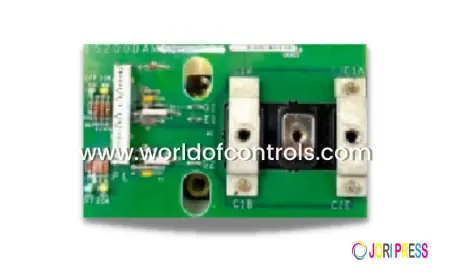How RS 485 IoT Gateways Simplify Legacy System Integration
RS 485 IoT Gateways simplify legacy system integration by enabling seamless connectivity, data exchange, and modernization for industrial IoT solutions.

Modern industries are increasingly moving toward digital transformation and smart factories. However, many businesses still rely on legacy equipment that uses older communication protocols like RS-485. While these devices are reliable, they were not designed for connectivity with cloud systems, IoT platforms, or advanced analytics. This creates a significant challenge for companies that want to adopt data-driven decision-making and predictive maintenance.
RS 485 IoT gateways solve this problem by acting as a bridge between old and new systems. They allow organizations to leverage existing devices while unlocking modern IoT capabilities, avoiding the high costs and disruptions of replacing equipment.
Understanding RS-485 Communication
RS-485 is a serial communication standard widely used in industrial environments. Its key features include:
-
Long-distance communication – Supports data transmission over distances up to 1.2 km.
-
Multi-device connectivity – Enables multiple devices (up to 32) to share the same bus.
-
Noise immunity – Resistant to electrical interference, making it suitable for industrial environments.
Despite these advantages, RS-485 is not compatible with modern IP-based networks. This makes direct integration with IoT systems, cloud platforms, or analytics tools difficult.
The Challenge of Legacy System Integration
Integrating legacy devices into modern IoT systems comes with several hurdles:
-
Protocol incompatibility – RS-485 communicates using serial protocols like Modbus RTU, which are not directly supported by IoT networks.
-
Limited accessibility – Legacy devices often lack network connectivity, making real-time monitoring difficult.
-
High costs – Replacing legacy devices with new IoT-ready hardware is expensive and disruptive to ongoing operations.
-
Data siloing – Without integration, critical data from legacy devices remains isolated, preventing organizations from leveraging analytics or automation.
RS 485 IoT gateways help overcome these challenges, allowing businesses to modernize operations without replacing existing infrastructure.
What Is an RS 485 IoT Gateway?
An RS 485 IoT gateway is a device that translates communication from RS-485 legacy devices into modern network protocols like MQTT, Modbus TCP/IP, HTTP, or OPC UA. Its main functions include:
-
Protocol conversion – Enables legacy devices to communicate with modern IoT platforms and cloud systems.
-
Device connectivity – Supports multiple RS-485 devices simultaneously.
-
Data aggregation – Collects and standardizes data from different devices into a unified format.
By doing this, RS 485 IoT gateways act as a bridge, connecting the old and the new, enabling organizations to adopt smart solutions without replacing their hardware.
How RS 485 IoT Gateways Enable Seamless Integration
1. Data Protocol Conversion
Legacy RS-485 devices communicate in serial formats, which are not compatible with IP-based networks. RS 485 IoT gateways convert these serial protocols into IoT-friendly protocols like MQTT or Modbus TCP. This allows data to be sent to cloud platforms, dashboards, or SCADA systems for analysis and visualization.
2. Real-Time Data Monitoring
With RS 485 IoT gateways, businesses can monitor device performance in real-time. Data such as temperature, pressure, energy consumption, or machine status can be accessed remotely. This helps in:
-
Early detection of anomalies
-
Optimizing operational efficiency
-
Enabling predictive maintenance
3. Centralized Device Management
RS 485 IoT gateways allow multiple legacy devices to be controlled and monitored from a single platform. This centralized approach reduces manual intervention, simplifies troubleshooting, and enhances operational efficiency. Administrators can configure, monitor, and manage all connected devices from a unified interface.
Benefits of Using RS 485 IoT Gateways for Legacy Systems
1. Cost Efficiency
Replacing legacy devices with modern IoT-ready equipment can be expensive. RS 485 IoT gateways allow organizations to integrate existing devices into new systems, extending their lifecycle and reducing capital expenditure.
2. Reduced Downtime
Gateways enable predictive maintenance by providing real-time insights into device performance. Early detection of issues helps prevent unexpected equipment failures, minimizing downtime and production losses.
3. Scalability
Businesses can gradually scale IoT adoption without replacing all legacy devices. RS 485 IoT gateways make it easy to add new devices, integrate with cloud services, and expand automation capabilities.
Real-World Applications
RS 485 IoT gateways are widely used across industries:
-
Manufacturing – Integrating older machinery with smart factory platforms to monitor production lines and optimize efficiency.
-
Energy & Utilities – Connecting meters, transformers, and pumps to monitor consumption, detect faults, and manage energy distribution.
-
Building Automation – Linking legacy HVAC, lighting, and security systems to centralized smart building platforms.
-
Transportation & Logistics – Connecting sensors and devices in fleet management and logistics operations for real-time monitoring and route optimization.
These applications demonstrate how gateways bridge the gap between legacy systems and modern digital infrastructure.
Choosing the Right RS 485 IoT Gateway
When selecting a gateway, businesses should consider:
-
Protocol compatibility – Ensure the gateway supports the protocols used by your devices (e.g., Modbus RTU, MQTT).
-
Device capacity – Check how many RS-485 devices the gateway can manage simultaneously.
-
Data transmission speed and latency – Ensure timely and reliable data delivery for real-time monitoring.
-
Integration with cloud platforms and software – Choose a gateway that easily connects with your existing analytics or IoT platforms.
-
Security features – Ensure the gateway offers encryption, authentication, and access control to protect sensitive industrial data.
A suitable RS 485 IoT gateway ensures seamless integration, reliable operation, and scalability for future needs.
Conclusion
RS 485 IoT gateways are essential tools for businesses looking to modernize operations without discarding legacy devices. They provide:
-
Seamless protocol conversion for legacy equipment
-
Real-time monitoring and data-driven decision-making
-
Centralized device management
-
Cost-effective modernization
By enabling legacy system integration, RS 485 IoT gateways empower organizations to embrace IoT, predictive maintenance, and Industry 4.0 strategies efficiently.
FAQs
Q1. Can RS 485 IoT gateways support multiple legacy devices simultaneously?
Yes, most gateways can connect and manage dozens of RS-485 devices concurrently, depending on the model.
Q2. Do I need to replace my RS-485 devices to use a gateway?
No. The gateway allows existing legacy devices to communicate with modern IoT systems without replacement.
Q3. Are RS 485 IoT gateways secure?
Modern gateways offer encryption, authentication, and access control to ensure secure data transmission.
Q4. Which industries benefit the most from RS 485 IoT gateways?
Manufacturing, energy, building automation, and transportation industries benefit significantly from these gateways.
What's Your Reaction?
 Like
0
Like
0
 Dislike
0
Dislike
0
 Love
0
Love
0
 Funny
0
Funny
0
 Angry
0
Angry
0
 Sad
0
Sad
0
 Wow
0
Wow
0
















































